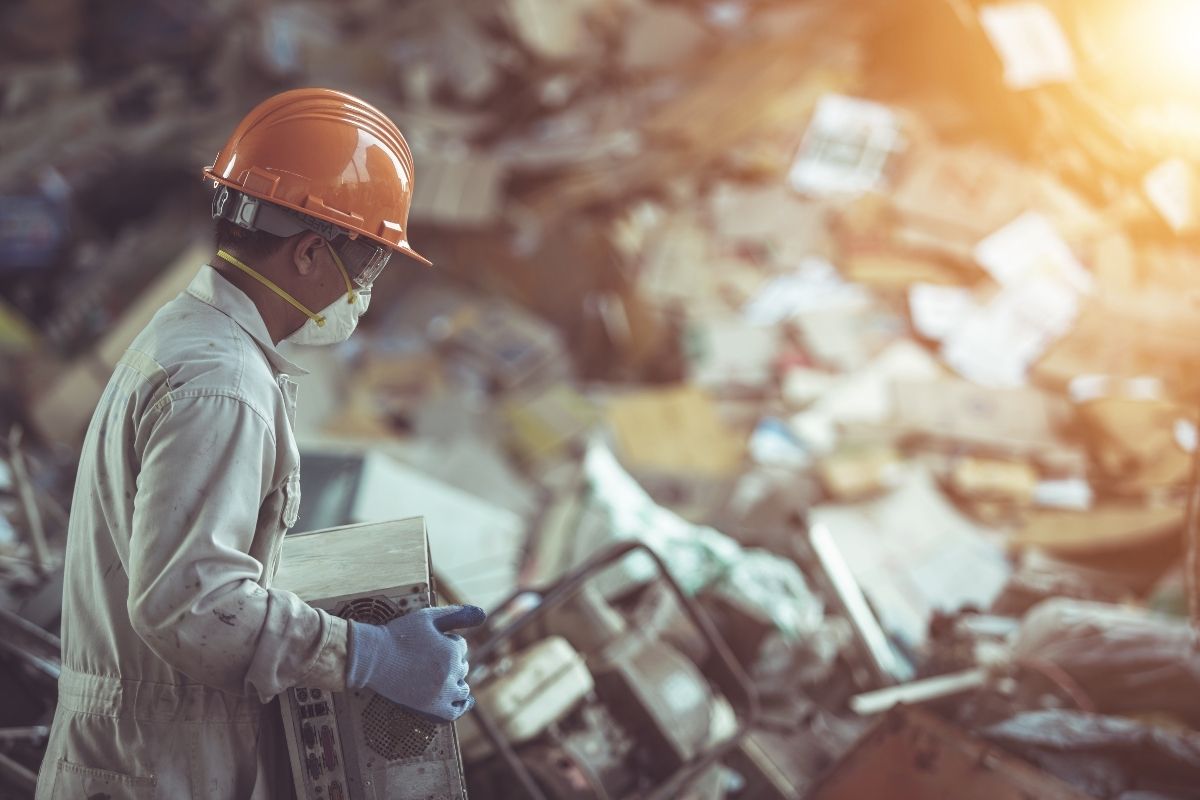COVID’s Impact on Waste Management

In March 2020, a new reality began in the United States. Reports of the novel coronavirus spreading at home and worldwide forced the country into a sudden, disconcerting lockdown. Left confused and uncertain about the future, U.S. citizens and government officials had to deal with a slew of new challenges and questions, chief among them being: What was to be done with all toxic waste generated by the pandemic? From the United Nations to local hospitals, COVID’s impact on waste management can be felt anywhere you look.
Waste Created by the Pandemic
The majority of waste created by the pandemic is healthcare waste, which is waste generated by healthcare facilities, medical laboratories, and medical research facilities. Most healthcare waste is non-toxic and comes from hospitals. Infectious waste, which only makes up a small fraction of all healthcare waste, is what causes so much concern. Infectious waste includes:
- Sharp waste
- Hazardous chemical waste
- Radioactive waste
- Pathological waste
- Other infections waste
Personal protective equipment, like masks, is one of the biggest additions to medical waste spurred by the pandemic. Not only in hospitals but homes as well, people are disposing of massive amounts of PPE in unmanaged dumpsites where they are openly burned.
Consequences of Poor Handling of Medical Waste
Without the proper product destruction services, medical waste could have severe consequences on the people involved in its disposal. Secondary disease transmission could find its way to waste pickers, waste workers, patients, health workers, and the community where the waste is disposed of.
Incineration and open burning without the correct methodologies could especially backfire. It exposes people who work in waste management and the entire community to toxic contaminants in air emissions and ash.
Appropriate Handling of Medical Waste
Wherever people handle medical waste, they must stick to strict regulations designed to keep themselves and others safe. This first begins by segregating the non-hazardous from the toxic waste. But a strong system would also include:
- Classification
- Containerization
- Color Coding
- Labelling
- Handling
- Transport
- Storage
- Treatment
- Final Disposal
Maintaining this system requires ongoing training and planning. Employers and employees who understand and respect the necessity for a careful approach to detail handle it best.
United Nations Environment Programme (UNEP)
Keith Alverson, the Director of the United Nations Environment Programme, envisions a future where COVID’s impact on waste management changes the status quo from here onward. Seeing the pandemic as a wake-up call for peoples’ relationship to waste, UNEP has devised a multi-step plan to modernize medical waste management.
- Block 1: Contribution to the medical and humanitarian emergency phase
- Block 2: A transformational change for nature and people
- Block 3: Building back better—greening the fiscal stimulus packages
- Block 4: Modernizing global environmental governance.
Alverson warned that the road ahead will be complex and difficult if we are to meet these goals. It will involve the adoption of new emergency plans for countries that may not yet have the resources to accomplish it themselves. Monitoring, continuous improvement, and training will be a new reality for people overseeing our waste.
